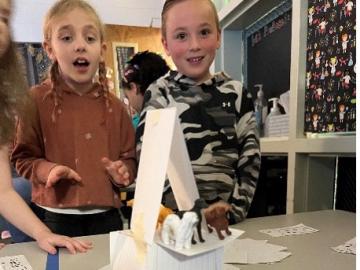
Filter News
Area of Research
- (-) Neutron Science (32)
- (-) Supercomputing (73)
- Advanced Manufacturing (1)
- Biological Systems (1)
- Biology and Environment (56)
- Building Technologies (1)
- Clean Energy (63)
- Computational Engineering (1)
- Computer Science (2)
- Electricity and Smart Grid (1)
- Energy Sciences (1)
- Fuel Cycle Science and Technology (1)
- Fusion and Fission (19)
- Fusion Energy (3)
- Isotope Development and Production (1)
- Isotopes (15)
- Materials (76)
- Materials Characterization (2)
- Materials Under Extremes (1)
- National Security (26)
- Nuclear Science and Technology (2)
News Topics
- 3-D Printing/Advanced Manufacturing (1)
- Artificial Intelligence (15)
- Big Data (4)
- Bioenergy (3)
- Biology (4)
- Biomedical (3)
- Biotechnology (2)
- Chemical Sciences (2)
- Clean Water (1)
- Climate Change (9)
- Computer Science (11)
- Coronavirus (1)
- Critical Materials (1)
- Cybersecurity (1)
- Decarbonization (3)
- Energy Storage (2)
- Environment (6)
- Exascale Computing (12)
- Fossil Energy (1)
- Frontier (15)
- High-Performance Computing (19)
- Machine Learning (5)
- Materials (11)
- Materials Science (4)
- Microscopy (1)
- Nanotechnology (4)
- National Security (3)
- Net Zero (1)
- Neutron Science (25)
- Nuclear Energy (2)
- Physics (2)
- Quantum Computing (7)
- Quantum Science (4)
- Security (1)
- Simulation (9)
- Software (1)
- Space Exploration (1)
- Summit (6)
- Sustainable Energy (2)
- Transportation (2)
Media Contacts
Xiao Wang, a research scientist at ORNL, has been named a senior member of the Institute of Electrical and Electronics Engineers, the world’s largest organization for technical professionals. Wang works in the lab’s Computing and Computational Sciences Directorate’s Advanced Computing for Health Sciences Section.

Few things carry the same aura of mystery as dark matter. The name itself radiates secrecy, suggesting something hidden in the shadows of the Universe.

The U.S. Department of Energy’s (DOE) Innovative and Novel Computational Impact on Theory and Experiment (INCITE) program is now accepting proposals for high-impact, computationally intensive research campaigns in a broad array of science, engineering and computer science domains. Proposals must be submitted between April 10, 2023 and June 16, 2023.

ORNL has named Prasanna Balaprakash to direct its artificial intelligence efforts. The laboratory’s AI Initiative coordinates efforts across its varied research directorates to harness the power of AI and data science in tackling some

ORNL has named Michael Parks director of the Computer Science and Mathematics Division within ORNL’s Computing and Computational Sciences Directorate. His hiring became effective March 13.

How did we get from stardust to where we are today? That’s the question NASA scientist Andrew Needham has pondered his entire career.

A team of scientists led by the Department of Energy’s Oak Ridge National Laboratory designed a molecule that disrupts the infection mechanism of the SARS-CoV-2 coronavirus and could be used to develop new treatments for COVID-19 and other viral diseases.

A chemist from Oak Ridge National Laboratory attracted national attention when her advocacy for science education made People magazine’s annual “Women Changing the World” issue.

Nine engineers from ORNL visited 10 elementary and middle school classrooms in three school districts during National Engineers Week, Feb. 21 to 24, 2023, describing and demonstrating the excitement of the engineering profession to more than 300 Tennessee students.

Scientists have long sought to better understand the “local structure” of materials, meaning the arrangement and activities of the neighboring particles around each atom. In crystals, which are used in electronics and many other applications, most of the atoms form highly ordered lattice patterns that repeat. But not all atoms conform to the pattern.


